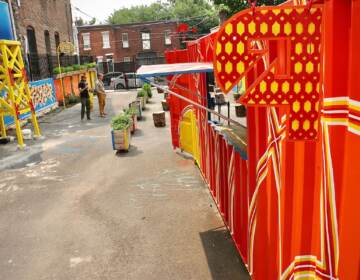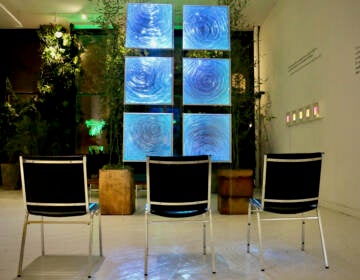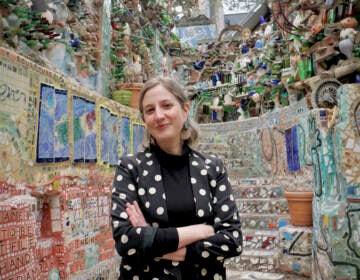A camera, a mask and 2020’s most enduring image
Philadelphia photographer Kyle Cassidy captured images of essential workers for his series Between Us and Catastrophe.
Listen 17:20-
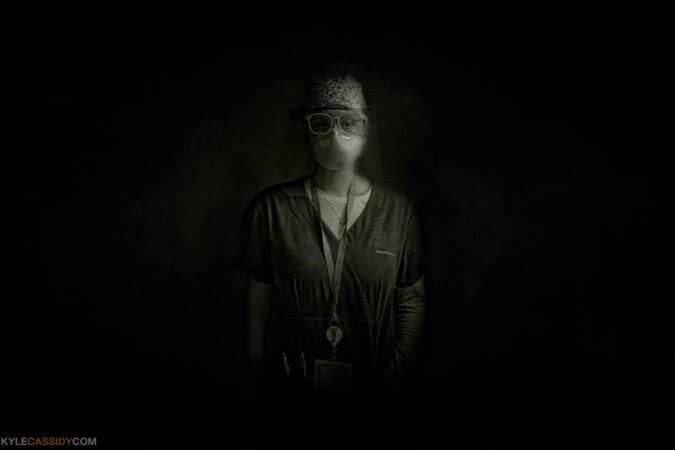
Alex is an emergency room nurse treating COVID-19 patients in the Greater Philadelphia Area. (Kyle Cassidy)
-

Travis is a bicycle delivery person for Caviar. (Kyle Cassidy)
-
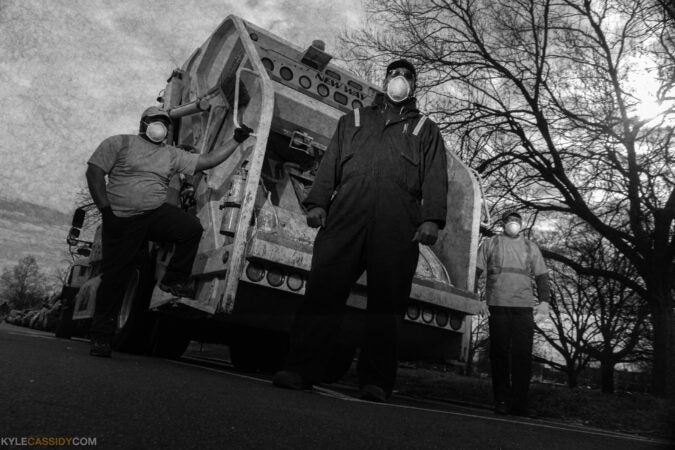
Zack, Deloy and Elijah are Philadelphia sanition workers still at work during the COVID-19 pandemic. (Kyle Cassidy)
-
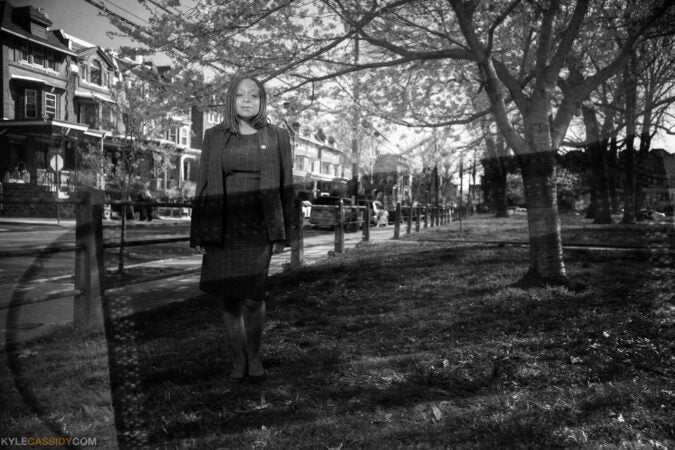
Jamie R. Gauthier is the Philadelphia City Council member representing the 3rd district. (Kyle Cassidy)
-
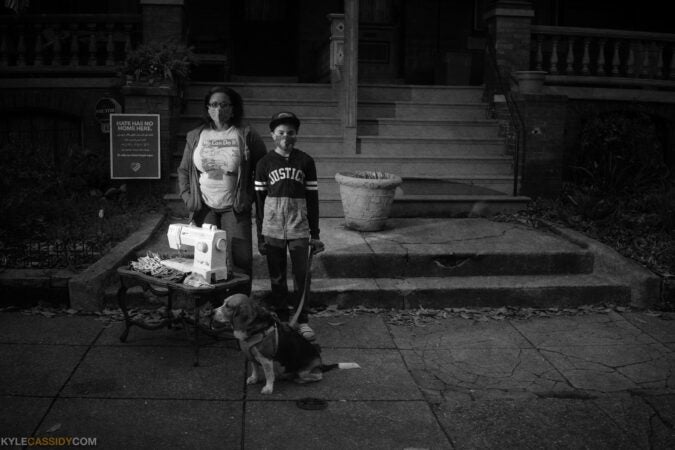
Nicole and her daughter, Naomi, make hospital masks for local health care workers. (Kyle Cassidy)
Since March, Philadelphia area photographer Kyle Cassidy has taken pictures of essential workers as a part of a series called “Between Us and Catastrophe:” healthcare workers, Instacart shoppers, members of city government, sanitation workers, and more.
Cassidy interviewed these workers as well, asking them about the risks they’re taking and the sacrificing they’re making to keep us all safe. “Some of these people are fighting COVID because they heard the clarion call and they ran out to stand between us and this virus and fight it. And other people are fighting this virus because we left them out there,” he says.
Why could pictures like these, highlighting essential workers, stay with us as the most enduring images of 2020?
Cassidy’s photographs are currently on display at an outdoor exhibit at the Science History Institute.

Hear the whole story on The Why
Interview highlights
Kyle Cassidy on what made him do the project
My grandmother gave me her photo album and I went through it with her … There are a number of pictures from World War II, and I asked her what that was like, and she had no specific memories. I thought that was sad because it was obviously a huge part of her life, and she didn’t remember anything that happened day to day. And I realize that in 40 years, kids are going to be going through trunks and attics and they’re going to find our cache of homemade hand sanitizer and masks. And they’re going to ask, “What did you do during this time?” And I wanted Philadelphia to have an answer for that.
Alex, a nurse who treats COVID patients in the greater Philadelphia area, on her experience
[We wear] two kinds of masks, an N-95 [and] a surgical mask, eye protection gown, and gloves. These patients who are suffering from Coronavirus, they don’t get to have family with them. They don’t get to be held by anyone. They don’t get to see anyone’s face. So you really have to make sure that you’re taking care of the whole person and not just the disease […]
We’re tired, that’s what I would say at this point. We have more knowledge, we have more education, but we’re tired […] I do think that when we look back on this time, there’s going to be a great recognition of the amount of trauma that is done to health care workers, families and patients alike. All of us are going through this massively traumatic experience. And I do feel from my perspective deep in the trenches, that this will be looked at as an event similar to when veterans come back from war.
Kyle Cassidy on using masks to make his photographs
[The grain in the photograph] is actually inner extruded fabric of a discarded surgical mask. I started seeing them on the street in probably April, and they had been in such demand. I remembered seeing them on the ground and thinking, ‘Oh, that’s one of those things that we’ve all been desperate to get, and now people are throwing them out. And the idea of a surgical mask is that the virus gets stuck in the fabric. And looking at them on the street I thought, you know there could be a dead coronavirus or a live coronavirus on that particular mask. And then I started collecting them and disinfecting them, and pulling them apart and printing the photos through the inner fabric of the mask. So each one has a unique overlay made by the fabric from a discarded surgical mask.
Kyle on how the project changed his perspective about essential workers
In the very beginning. I was like, “Oh, these people are all heroes, I want to photograph heroes.” And then I realized that the word “hero” is transactional and we use it a lot of times when we don’t want to feel guilty for something. So some of these people are fighting COVID because they heard the clarion call and they ran out to stand between us and this virus and fight it. And other people are fighting this virus because we left them out there… It’s wrong to use that word because some people, a lot of people who are on the front lines do not have a choice about being on the front lines. They’re not out there because they want to be out there, they’re out there because they can’t pay their rent, they’re out there because they’re going to lose their house. They’re out there because they don’t have any other choice.
WHYY is your source for fact-based, in-depth journalism and information. As a nonprofit organization, we rely on financial support from readers like you. Please give today.




